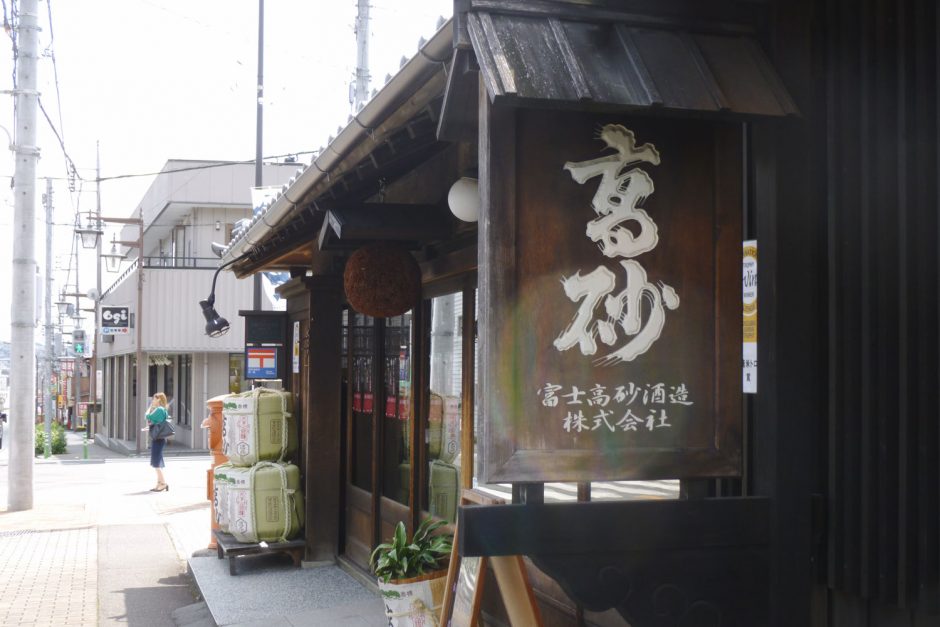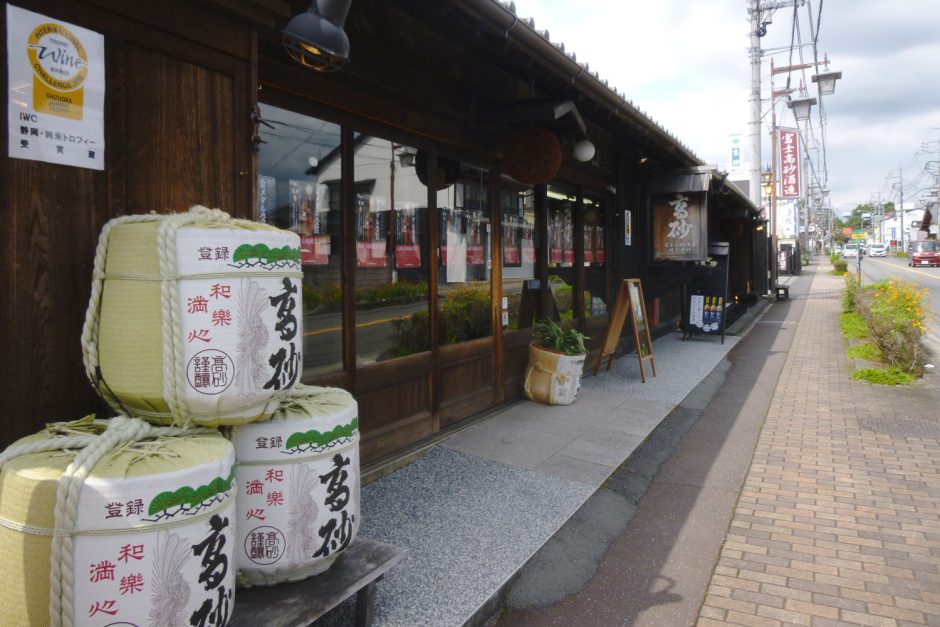Warm, rich flavoured, and deeply satisfying, it’s no wonder that Sake is enjoyed and celebrated around the world. Yet few might understand the meticulous process of skill, heart and soul that goes into every bottle. So, we took a trip to one of the finest Sake makers in Japan that keeps the artful tradition of Kimoto brewing method alive.
About two hours’ train ride from Tokyo, at the foot of famed Mt. Fuji, stands the Fuji Takasago Brewery in Shizuoka prefecture of Fujinomiya City; founded by Shokichi Yamanaka with a Noto Toji brewmaster in 1831, who discovered its ideal Sake brewing environment amidst the tranquil scenery.
The façade and inner ambience breathe of culture and history, with eight ancient Buddhist statues saved from the Haibutsu Kishaku movement during the Meiji Restoration in the late 1860s, when temples were violently abolished and destroyed. Today, the statues are important cultural antiques and had watched over the brewery for centuries.
The secret of Fuji Takasago’s famous Sake is the natural groundwater from an underground spring that took about 100 years to filter through from Mt. Fuji – crystal clear, extremely soft and at a perfect 5°C for Sake brewing. The spring is also connected to a pond within the Mt. Fuji Hongu Sengen, a world heritage shrine.
But the pristine natural water is just half the story. The current Toji brewmaster says it is preparation, arrangement and trust that makes great Sake – trust in good ingredients, in his colleagues, and in his experience and faithful knowledge of the traditional brewing process.
The Rice
Sake is made from rice, water, and Koji – a safe, amylases-producing mould used in fermented foods. Only large grain variants different from smaller food grains, generally called Sakamai (Sake rice) or Shuzoutekimai (Sake-suitable rice) are used to make Sake.
Fuji Takasago brewery uses the King of Sake rice Yamadashinki variant, an equivalent to the Cabernet Sauvignon grape for wines.
The husks are polished off and the bran washed away by hand, leaving the starchy core; then soaked in water, before steamed. But unlike food rice which is cooked by boiling water, Sake rice is steamed in a special Koshiki steaming vat. After that, the Koji mould in powdered form is sprinkled, then kept in a room with high humidity and temperature for 36 to 45 hours. This converts the rice starch into glucose.
The Kimoto Method
The next step is what makes the Kimoto brewing method special. To turn glucose into alcohol, a yeast-starter or Shubo is needed. The Kimoto-style yeast-starter is called Yamahai. The mix of rice, water, Koji and Yahamai is rammed into a puree with wooden oars. This is the traditional method which accelerates yeast growth. It is done in the pre-dawn hours during the coldest months in Japan. The result is a mash called Moromi.
Only 5% of Japanese Sake breweries still use this method. Fuji Takasago is one of them. It takes skill, hard work and patience to create the best Moromi; which is then transferred into a fermentation tank, where more steamed rice, water and Koji is added in three steps over four days. This multiple parallel fermentation processes is unique to Sake brewing, effectively converting starch to glucose to alcohol in a single vat, and produces a higher alcohol content than other liquors.
Sake made from the Kimoto method has a depth of flavour and body, with a clean finish, unlike the artificial Sokujo method.
But we’re not quite done yet.
Pressing and Filtering
Once fermentation is completed, the Moromi is wrapped in a cloth bag and the fresh Sake pressed or dripped out. The undissolved cakes are called Sakekasu – the main ingredient of Amazake and also a raw ingredient for making Shochu.
At this point, the Sake is golden; which is then filtered through active charcoal to remove the tiny sediments and impurities, leaving the clear liquid we know of.
This is when the Sugitama or Sakabayashi, a cedar leaves sculpture the size of a disco ball, is hung at the brewery’s front to signify new Sake has been made.
Pasteurization, Maturation and Dilution
The Sake is then pasteurized by passing through a hot water pipe, killing off bacteria and deactivating excess enzymes. This changes the aroma and leaves an unrefined taste. So the Sake is left to mature in tanks for 6 months to a year.
Finally, water is added to dilute the alcohol content before bottling. And by now, the green Sugitama ball would’ve withered and browned; to symbolize that the Sake has matured.
Tips to Enjoy Sake
Fuji Takasago produces about 40 types of Sake and is especially proud of their Yamahai types. Although any Sake served chilled or at room temperature is good, according to them, the best way to savour the full umami flavour of Yamahai-style full-bodied Sake is to warm it up first. Almost any food is great with Sake. Yamahai Sake can even be paired with sweet snacks like chocolates.
So, if you’re headed to Japan, be sure to take a day trip to beautiful Mt. Fuji, and visit the Fuji Takasago brewery for an authentic Sake experience!

















You must be logged in to post a comment.